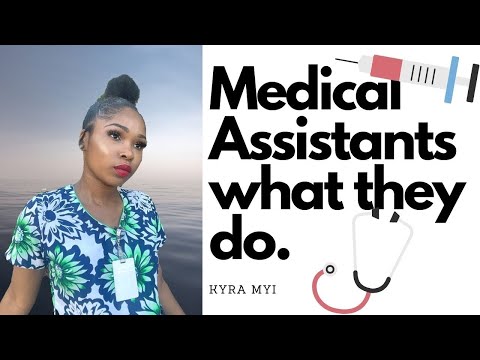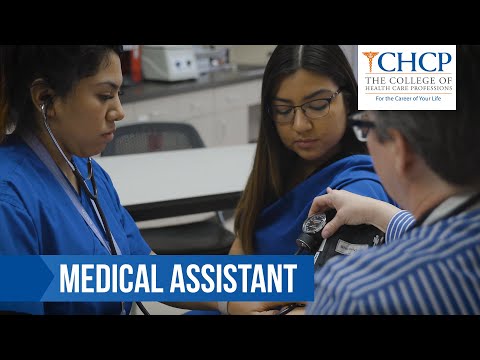What Does a Medical Assistant Do?
Contents
A medical assistant is a multi-skilled professional who supports the work of physicians and other health professionals.
Checkout this video:
Job Description
A medical assistant is a multi-skilled health professional who supports the work of physicians and other health professionals, usually in a clinic setting. Medical assistants do administrative and clinical tasks to keep the offices of physicians and other health practitioners running smoothly. The duties of Medical Assistants vary from office to office, depending on the size and location of the practice and the specialty of the practitioner. Most medical assistant jobs require completion of an accredited medical assistant training program.
Duties and Responsibilities
Medical assistants are vital members of the healthcare team. They perform a variety of clinical and administrative tasks to keep the office of a healthcare provider running smoothly.
Medical assistants are usually responsible for scheduling appointments, taking patient medical histories and vital signs, preparing patients for examination, assisting the physician during the exam, and performing basic laboratory tests. They may also give patients instructions on taking medications or how to prepare for medical procedures. In some states, they may be able to give injections or perform other delegated medical tasks as well.
In addition to their clinical duties, medical assistants may also handle billing and coding, insurance forms, and prescription refill requests. They may also stock exam rooms with supplies, maintain equipment, and dispose of contaminated materials. Many medical assistants are responsible for scheduling diagnostic tests and arranging hospital admissions for patients.
Skills and Qualifications
Medical assistants perform a variety of administrative and clinical tasks to support the work of physicians, nurse practitioners, and other health care professionals. They typically work in doctors’ offices, clinics, and other outpatient care facilities.
Most medical assistants have postsecondary education such as a certificate or diploma from an accredited program. Some states have approved apprenticeship programs for medical assistants.
Employers generally prefer candidates who have completed a medical assistant program accredited by the Commission on Accreditation of Allied Health Education Programs (CAAHEP) or theAccrediting Bureau of Health Education Schools (ABHES). Candidates who have not completed an accredited program may be required to take qualifying exams before they can be hired.
Education and Training
Medical assistants are trained on the job, although many have postsecondary education, such as a certificate. Programs typically take 1 year or less to complete and are available from community colleges, technical schools, and vocational schools. Some states have regulations that control the work of medical assistants.
Education for medical assistants typically lasts 1 year or less and leads to a certificate or diploma. Some programs lead to an associate degree. Most programs include both classroom and clinical work. Classroom work covers topics such as Medical Terminology transcription, and insurance processing. Clinical training usually takes place in a healthcare facility and provides students with the opportunity to learn by doing, under the supervision of experienced medical personnel.
Salary and Job Outlook
Medical assistants are in high demand and the job outlook is excellent. According to the Bureau of Labor Statistics, the median salary for medical assistants was $33,610 in 2018, and the field is expected to grow by 29% from 2018-2028. Medical assistants perform a variety of administrative and clinical tasks to support the work of physicians and other health care professionals. They may be responsible for scheduling appointments, taking medical histories and recording vital signs, assisting with examinations, and providing patient education.
Certification
There are many professional organizations that offer certification for medical assistants. Certification shows that you have the knowledge and skills to perform the duties of a medical assistant and meet the standards set by the organization. To become certified, you must pass an exam. The exams cover topics such as anatomy, physiology, medical terminology, and medical law and ethics.
Advancement Opportunities
There are a number of ways that medical assistants can advance their careers. One option is to pursue certification, which can demonstrate expertise and commitment to the profession. Another possibility is to seek out a position in a specialty area, such as ophthalmology or podiatry.
Many medical assistants choose to continue their education and pursue related degrees, such as becoming a registered nurse. With additional training, medical assistants can become licensed practical nurses, pharmacists, and even doctors. Continuing education opportunities are widely available and many employers encourage employees to take advantage of them.
Working Conditions
Medical assistants work in a variety of medical settings, including doctors’ offices, hospitals, and clinics. They often work alongside other healthcare professionals, such as doctors, nurses, and medical transcriptionists
Most medical assistants work full time. Some work evenings or weekends to accommodate patients’ schedules.
Job outlook by state
The job outlook for medical assistants varies by state. In some states, the demand for medical assistants is growing faster than the average for all occupations, while in other states the demand is slower. The following are six states with the highest demand for medical assistants, based on data from the Bureau of Labor Statistics (BLS).
The job outlook for medical assistants varies by state. In some states, the demand for medical assistants is growing faster than the average for all occupations, while in other states the demand is slower. The following are six states with the highest demand for medical assistants, based on data from the Bureau of Labor Statistics (BLS).
1. Massachusetts – The demand for medical assistants in Massachusetts is expected to grow by 23.8% between 2016 and 2026. This is much faster than the average growth rate for all occupations in the state, which is 9.4%.
2. Alaska – The demand for medical assistants in Alaska is expected to grow by 22.1% between 2016 and 2026. This is slightly slower than in Massachusetts but still much faster than the average growth rate for all occupations in the state, which is 7.6%.
3. Nevada – The demand for medical assistants in Nevada is expected to grow by 21.4% between 2016 and 2026. This is about on par with Massachusetts and Alaska but still much faster than the average growth rate for all occupations in the state, which is 11%.
4. Hawaii – The demand for medical assistants in Hawaii is expected to grow by 21% between 2016 and 2026. This is slightly slower than in Massachusetts, Alaska, and Nevada but still much faster than the average growth rate for all occupations in the state, which is 8%.
5. Arizona – The demand for medical assistants in Arizona is expected to grow by 20% between 2016 and 2026. This is about on par with Hawaii but still much faster than the average growth rate for all occupations in the state, which is 11%.
6. Idaho – Thedemandfor medicalassistantsinIdahoisexpectedtogrowby19%between2016and2026 .This isslowerthaninMassachusetts ,Alaska ,Nevada ,Hawaii ,andArizona butstillmuchfasterthantheaveragegrowthrateforalloccupationsinthestate ,whichis9% .
FAQ’s
1. What is a medical assistant?
2. What are the duties of a medical assistant?
3. What is the job outlook for medical assistants?
4. How much do medical assistants make?
5. How do I become a medical assistant?







